When they say “Namaskara” at the ‘Evolve Back’ – they mean it. After all, it’s the traditional Indian greeting all over India. When I heard that the House of Ramapuram had ventured into hospitality with the Orange County Resorts on their 100 year old property – the Chikkana Halli Estate (300 acres), I visited both their properties in Coorg and Kabini, which were absolutely delightful. Last year, the group ventured out again, this time, changing their name but not their brand, as Evolve Back – The Kamalapura Palace, Hampi.
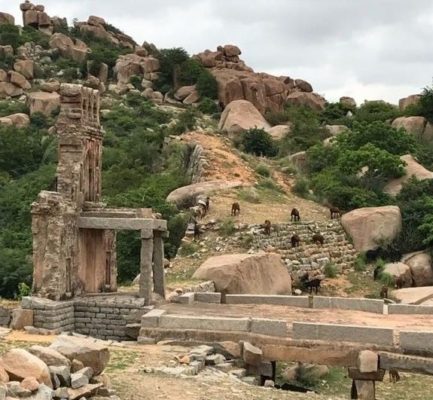
Starting all the way from Mumbai, I reached Bengaluru midmorning. Cruising along for 217 miles on the NH-4, one realises that the Karnataka government has considered tourism very well. The highway offers a very interesting seven hour drive that just flies by as the countryside engages one in a boulder-laden landscape – the famous Hampi rock formations.
A journey back in time
Hampi was the Hindu capital of the Vijayanagara dynasty that existed in the 14th century. Today, the ruins tell the story of a forgotten kingdom of art, architecture, and religion. Packed with beautiful temples, market places, water bodies, and ancient monuments, it attracts the discerning traveller.
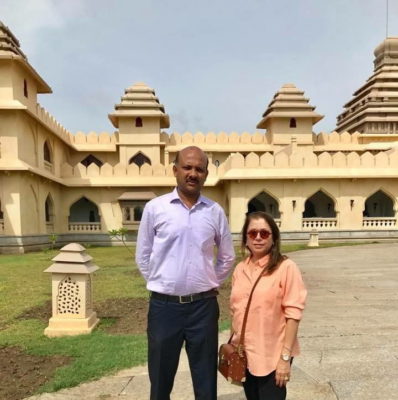
We drove into the palatial grounds of the Kamalapura Palace not knowing what to expect as it was situated in the small town of Hampi that is 4km away from the Unesco Heritage Site. Everything suddenly seemed straight out of a picture book – the stone walls tall and daunting but the insides softened as the warmth reached us in the guise of a lovely welcome of a sweetened coconut drink and cheese hors d’ oeuvres.
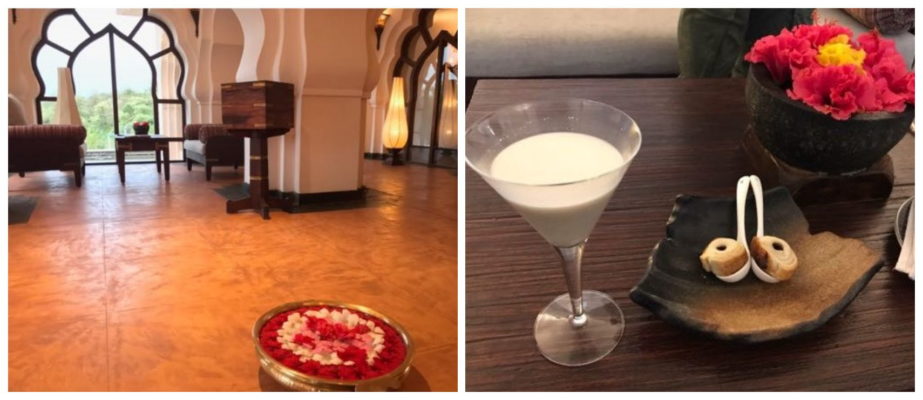
Smiling faces surrounded us. The palace blossomed out into the vast lobby with its curves and ceilings, while mashaals (torches) dotted the walls. The arched hallways spoke of a glorious era gone by. Melodious flute music wafted out from the open courtyard as the flautist smoothly played into the sunset hues. The whole place was bathed in a different light, the shadows beckoning us to our accommodation.
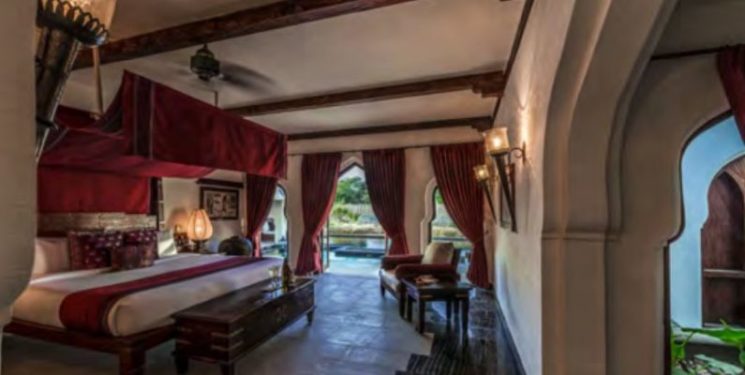
The Kamalapura Palace offers four categories of accommodation – the Nivasa deluxe suite (950sq ft), the Nilaya Terrace Suite (1372sq ft), The Zenana Palace Suite (1590sq ft), and the Jal Mahal, Private Pool Villa (2600sq ft). Inside the Jal Mahal suite, I marveled at the Queen-sized bed shrouded in wispy splendor, marked with designated spacious areas for reading, writing, resting, and dining.
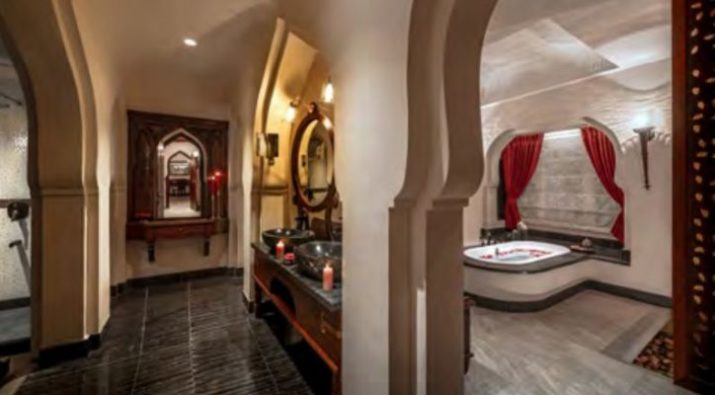
The royal bath having a Jaccuzi looked ever so inviting as it opened out into courtyards. The private deck overlooked the Mantappa by the private pool – a great setting for a romantic evening. The whole look was obviously translated from the Vijayanagar Empire and was luxurious without a fault.
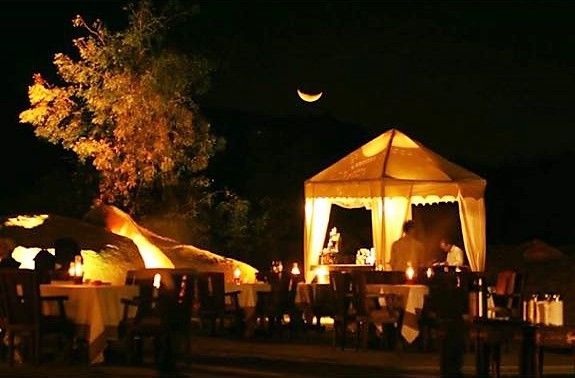
As dusk fell, the hotel had arranged some cultural activities by the poolside where the gazebo beautifully played the stage for numerous performances such as dance and theatre – a heady mix of the past in the present. Dinner followed at the ‘Bahmani’ where the whole aura of the palace steeped in history promoted authentic Nawabi cuisine by candlelight. The Bahmani Sultanate that was the principal rival, allowed an amalgamation of Persian and other influences. Satiated with the array of delicacies – kababs, rotis, and the gravies – that were made to suit our palate; we called it a night, to retire to our magical abode.
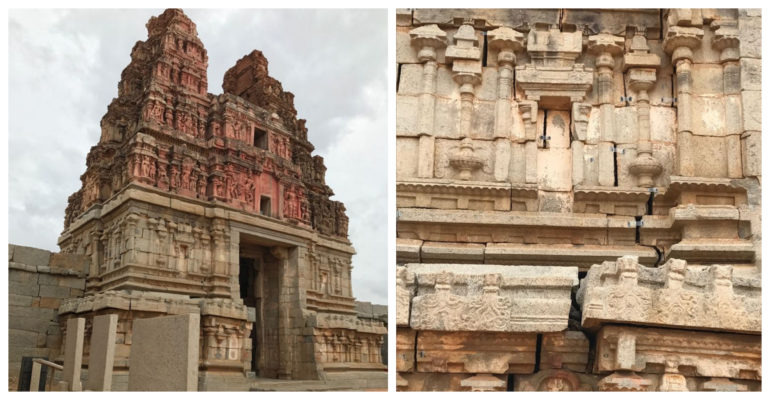
Temple trails
Early morning the next day, we were ready post a sumptuous breakfast at the ‘Tuluva’, named appropriately after the bygone era, for the ‘Vitthalapura Walk’ that had been arranged. The Sri Vijaya Vitthala Temple (15th century) is an ancient monument that is known for its exceptional Dravidian style of architecture and is one of the most famous structures in Hampi.
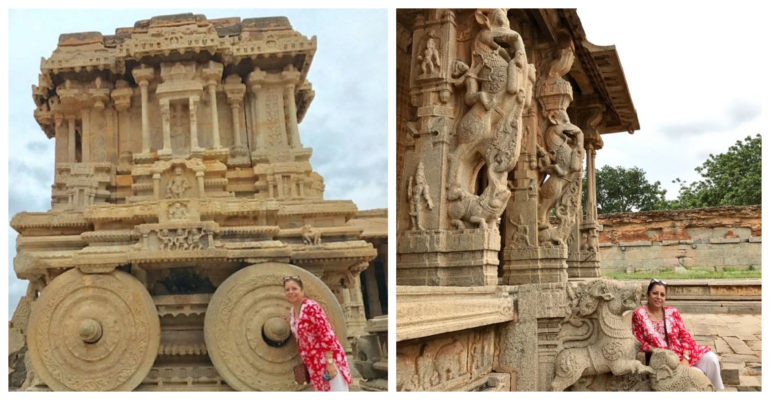
The Stone Chariot and the fascinating musical pillars of the Ranga Mantappa are the major attractions. Worship and commerce both exist side by side as the remnants of the market places are sighted. Back at the hotel, and rested post lunch, we were at the infinity pool where the water was warmer and helped soothe our tired feet.
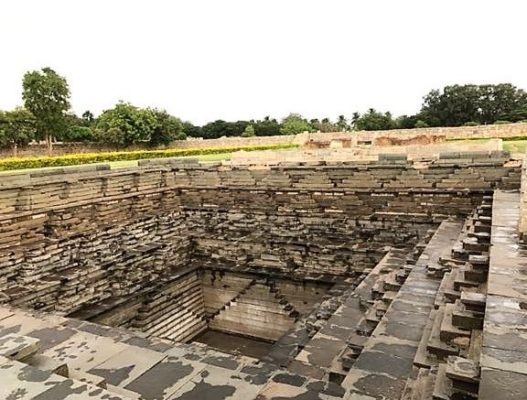
The aqueduct-fed Pushkarni (temple tank) inspired the Olympic-sized pool. High tea consisting of Indian eats at the ‘Deep Lounge’ (lobby) encouraged us to continue on to another trail, and back to Hampi.
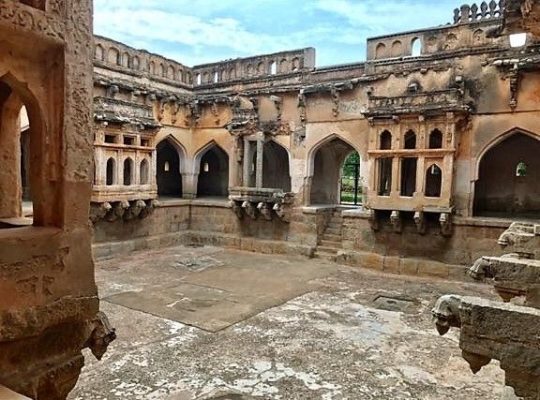
The Raya Trail took us back 500 years into the times and lives of the Maharajas of Vijayanagara. The Queen’s Bath turned out to be a standalone structure that had provisions for the daasis (attendants) who looked on, periodically throwing petals and aromatic luxury paraphernalia while the queens bathed. The Hindu-Islamic influences augmented the allure of the structure. The Mahanavami dibba (stage) was a tall structure that the king and his family would sit on when they would observe cultural festivals.
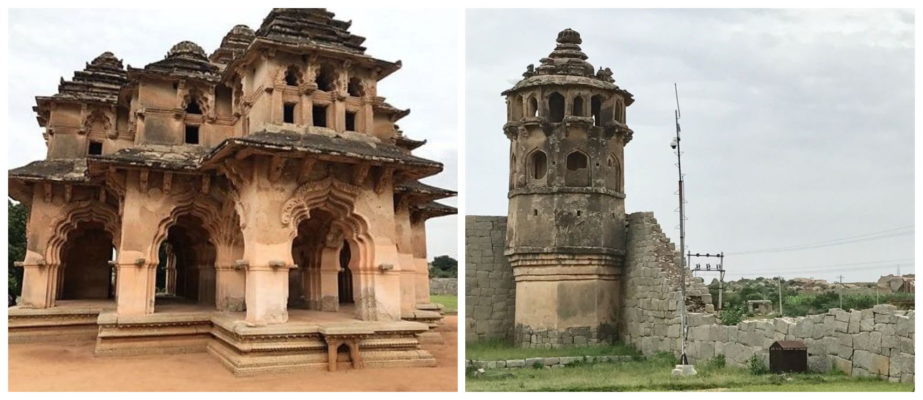
The hidden step wells – Pushkarini – were also magnificent. The Hazara Rama temple, exclusive to the Royal family, had on the walls inscribed the entire story of the Ramayana. The Lotus Mahal, known to be the queen’s zenana, allowed entry only for the king, but was protected by Hijras (eunuchs) in all watchtowers. The last stop on the Raya trail was the Elephant Stables, which were marvels of architecture with separate quarters for the mahouts. It was awe-inspiring to see so much history all in one place.
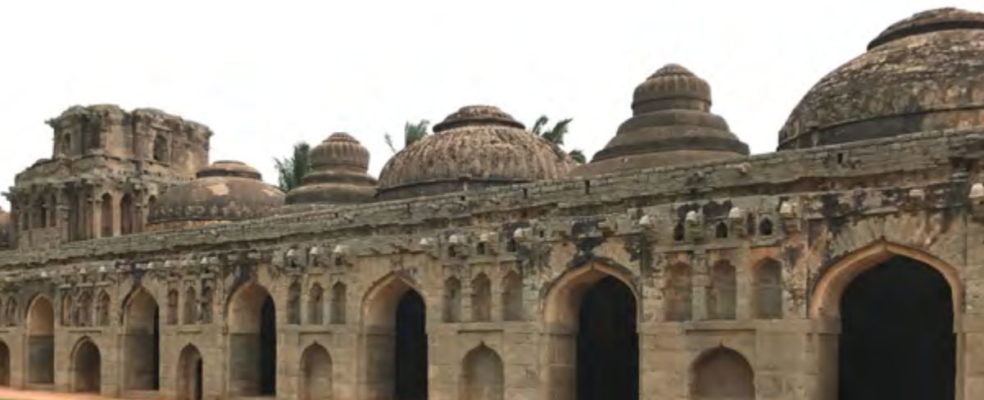
Filled with actual visions and brimming with pride for the days gone by, wherein our ancestors had acquired a much better standard of living than us, we gathered that it was a good time to bring in the happy hour at the Palace Bar called the ‘Howdah’. It was well stocked and proved to be the perfect place to end the day with a huge Elephant face docking the main bar with tusks and mashaals lining the walls.
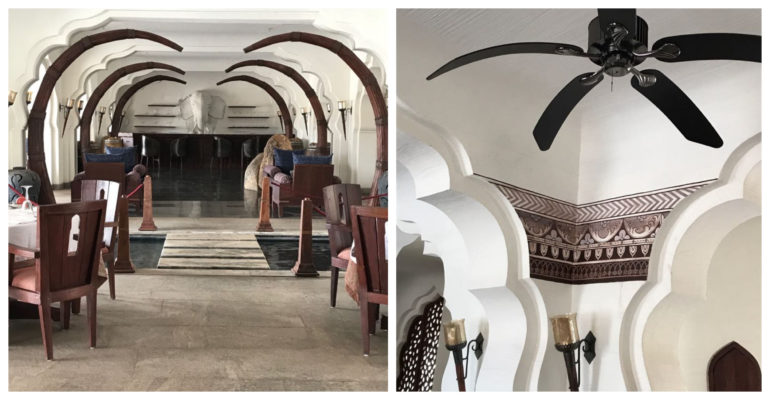
The stage was well set. For family and children, there was the ‘Anubhava experience Centre’ where there are ancient and new games to be played. The history route continued the next day as we pursued the Virupaksha Trail that began with a leisurely walk up the Hemakunta Hill. The stretch included the Monolithic Bull – Nandi – and the Virupaksha Bazaar where gold and diamonds were believed to be sold in kilogrammes for the cheapest rates.
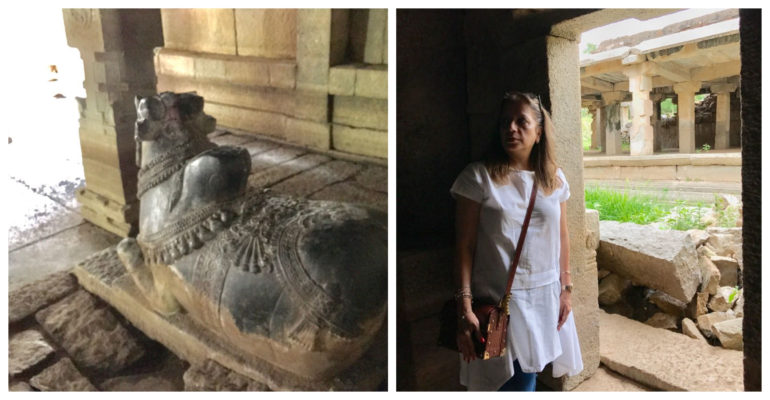
Next on the list was the Achutarya Temple. The Tungabhadra River, the lifeline of Hampi was the succeeding stop. It ended with the old Virupaksha temple at the base of the hill – known to be one of the exemplars of temple architecture in India. The temple elephant Lakshmi, and a hoard of langurs meet you inside the Virupakshewara temple complex. The Lakshmi Narasimha temple has the remains of the Ugra Narasimha, without Lakshmi sitting on his lap, but still has the seven heads of Shesha over the God. A massive Shiva linga stands maintained at the side of the Ugra Narasimha.
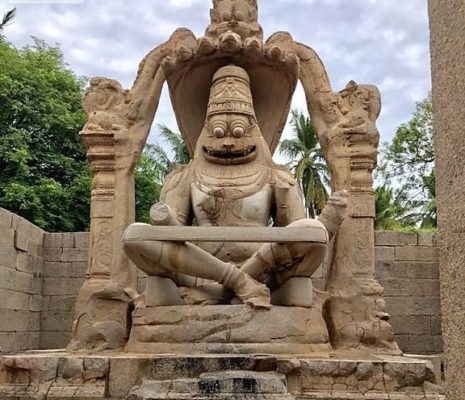
Catching some breath
Back after the trail, I was ready for an evening of spa therapy at the ‘Vaidya Sala’ where the hotel’s spa offered therapies that were befitting the centuries old ayurvedic traditions. I chose the Abhayanga as natural and herbal remedies combat and counteract imbalances in the body. Designed traditionally with a central courtyard, the royal influences could be seen in the exquisite woodworks.
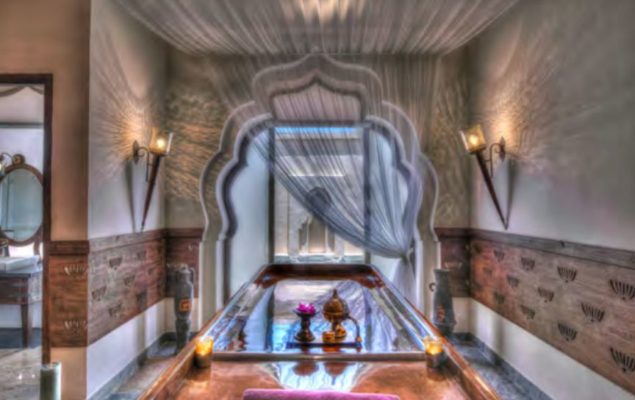
I encountered the near perfect experience, provided by deft, trained hands as I was left recuperating in the rest area, which felt like a slice of heaven. All rested, I headed for the Katha (Reading lounge) where I immersed myself in some more history. I dug my head into the coffee table books, taking in the sinful pleasure of having a cappuccino brewed from Sidhapur, a signature house brand of the Orange County Group. It was a great way to end a day full of nostalgia on a trip of this stature.
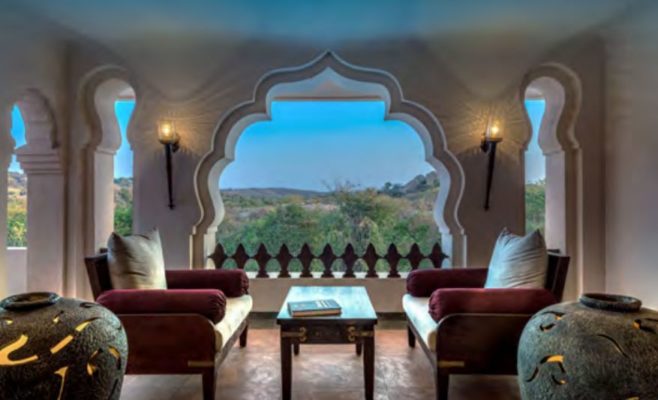
Experiencing Hampi through the palatial Kamalapura Palace proved to be clearly the way to live the exquisite past through this engaging present.
Previously published in FWD Life
Image Credits : Maya Lalcandani, FWD Life, Google



